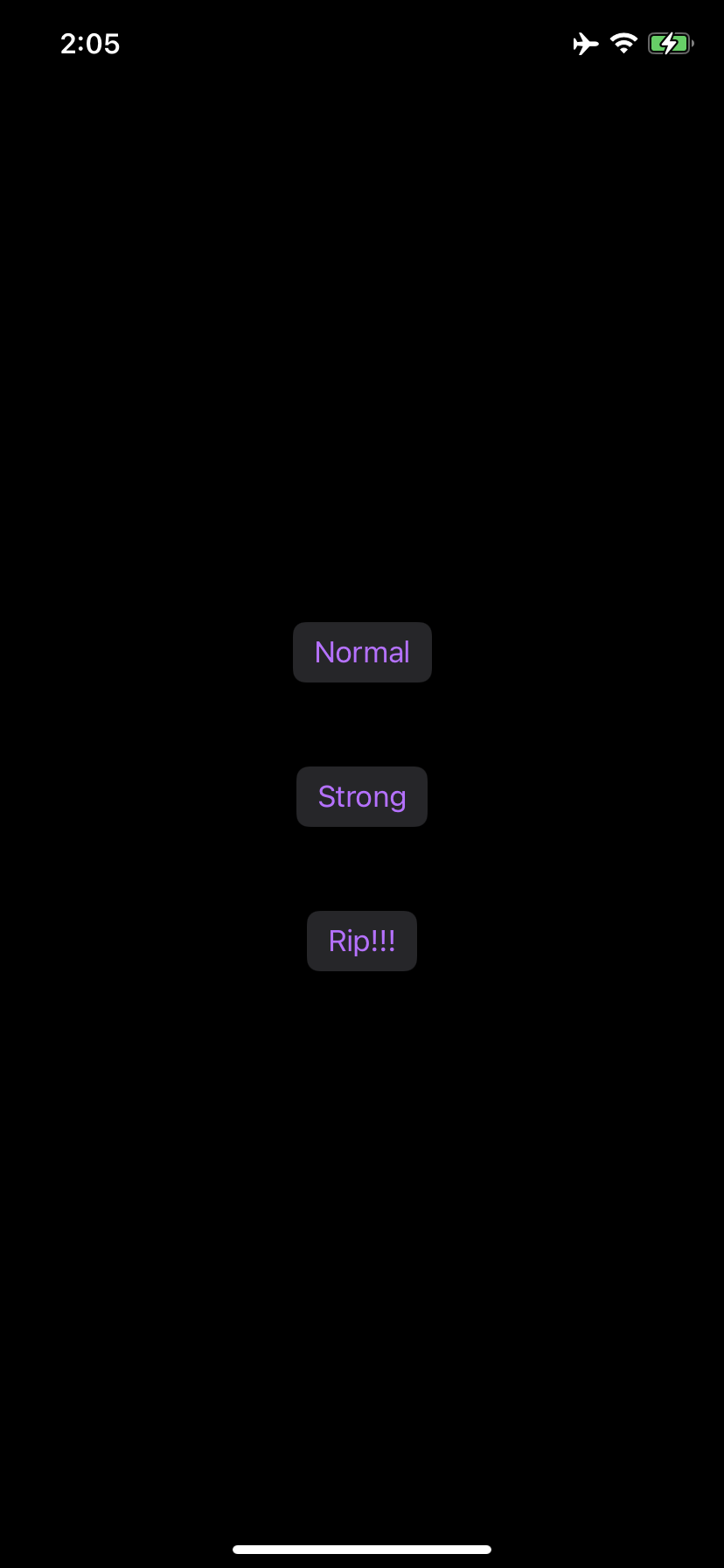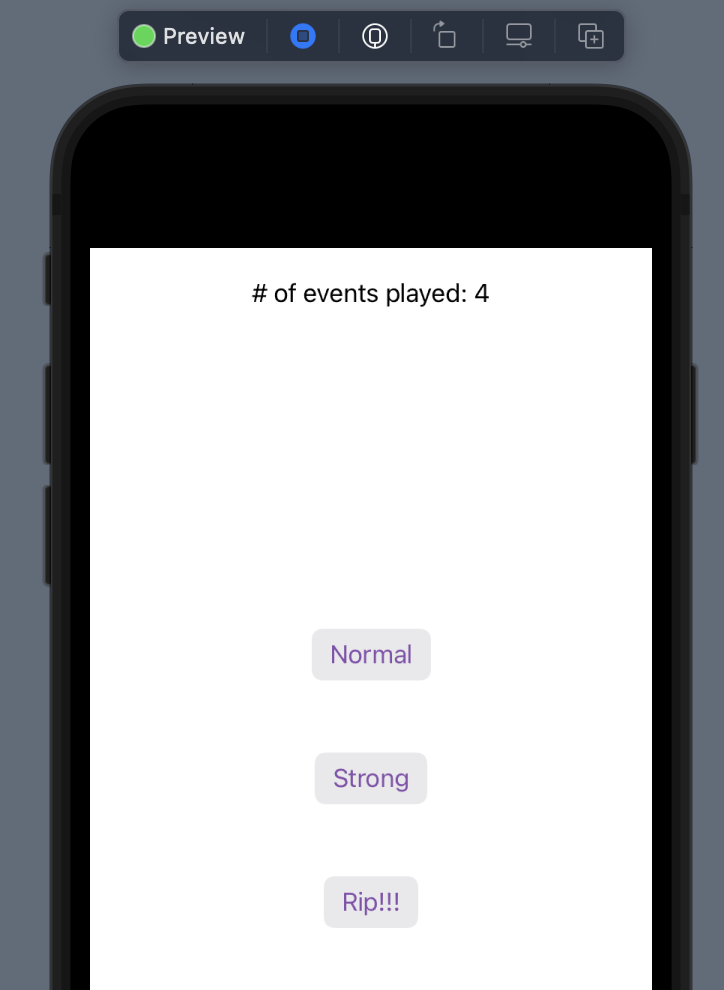4.9 KiB
SwiftUIHaptics Library
An open source library that provides a common service to use in projects that require haptics feedback.
Developed as re-usable components for various projects at XII's iOS, macOS, and watchOS applications.
Installation
Swift Package Manager
- In Xcode, select File > Swift Packages > Add Package Dependency.
- Follow the prompts using the URL for this repository
- Select the
SwiftUIHapticslibrary to add to your project
Dependencies
License
See the LICENSE file.
Supported Platforms
This library is compatible with the iOS, watchOS, and macOS platforms. On iOS/watchOS the haptics engine is used to play various haptic events. However, on macOS all events are simply skipped. MacOS support is provided simply to allow the same piece of SwiftUI code to interact with the haptics service, without having to "gate" its logic using an OS check.
Defining haptic events (Source)
struct HapticEvent {
let underlyingEvents: [CHHapticEvent]
}
A struct containing a series of CHHapticEvents to be played via the HapticsService.
Creating haptic events (Source)
Single events
extension HapticEvent {
static func single(
intensity: Float? = nil,
sharpness: Float? = nil,
attack: Float? = nil,
decay: Float? = nil,
release: Float? = nil,
sustained: Float? = nil,
relativeTime: TimeInterval = 0.0,
duration: TimeInterval = 0.0
) -> HapticEvent
}
Creates a single HapticEvent, with the ability to specify all the parameters and defaulting others.
Patterns
extension HapticEvent {
static func pattern(events: [HapticEvent]) -> HapticEvent
static func pattern(_ events: HapticEvent...) -> HapticEvent
}
Creates a pattern of haptic events by combining all underlying events for the provided HapticEvent instances.
From an existing HapticEvent
extension HapticEvent {
func timeShifted(
relativeTime: TimeInterval,
duration: TimeInterval
) -> HapticEvent
}
Returns a time shifted HapticEvent with the provided relative time and play duration specified.
HapticsService (Source)
class HapticsService : ObservableObject {
var isAvailable: Bool { get }
init()
func play(event: HapticEvent) {
}
Usage Example
Define your events
extension HapticEvent {
static let strong: HapticEvent =
.single(intensity: 0.75, sharpness: 0.75, decay: -0.5)
static let normal: HapticEvent =
.single(intensity: 0.5, sharpness: 0.5, decay: -0.5)
static let ripPattern: HapticEvent = .pattern(
events: (0..<12).map { index in
HapticEvent.normal
.timeShifted(
relativeTime: Double(index) * 0.025,
duration: 0.1
)
}
)
}
Wire up the HapticsService
import SwiftUI
import SwiftUIHaptics
@main
struct FooApplication : App {
@StateObject private var hapticsService = HapticsService()
var body: some Scene {
WindowGroup {
ContentView()
.environmentObject(hapticsService)
}
}
}
Fire events in your Views
struct ContentView : View {
@EnvironmentObject private var hapticsService: HapticsService
var body: some View {
VStack {
Spacer()
Button("Normal") {
hapticsService.play(event: .normal)
}
.buttonStyle(BorderedButtonStyle())
.padding(20)
Button("Strong") {
hapticsService.play(event: .strong)
}
.buttonStyle(BorderedButtonStyle())
.padding(20)
Button("Rip!!!") {
hapticsService.play(event: .ripPattern)
}
.buttonStyle(BorderedButtonStyle())
.padding(20)
Spacer()
}
}
}

Supporting mocking
Mocking of the service can be useful in previews as well as other applications. The HapticsService is shipped with mocking support that can be used in debug builds as follows:
#if DEBUG
struct ContentView_Previews : PreviewProvider {
static var previews: some View {
PreviewView()
}
}
struct PreviewView : View {
@StateObject private var mockHapticsService = MockHapticsService()
@State private var eventsPlayed: Int = 0
var body: some View {
VStack {
Text("# of events played: \(eventsPlayed)")
ContentView()
.environmentObject(mockHapticsService as HapticsService)
}
.onAppear {
mockHapticsService.playCallback = { _ in
eventsPlayed += 1
}
}
}
}
#endif

